Conflict Zones
Away from the global spotlight, Eritreans are trapped in a garrison state | Conflict
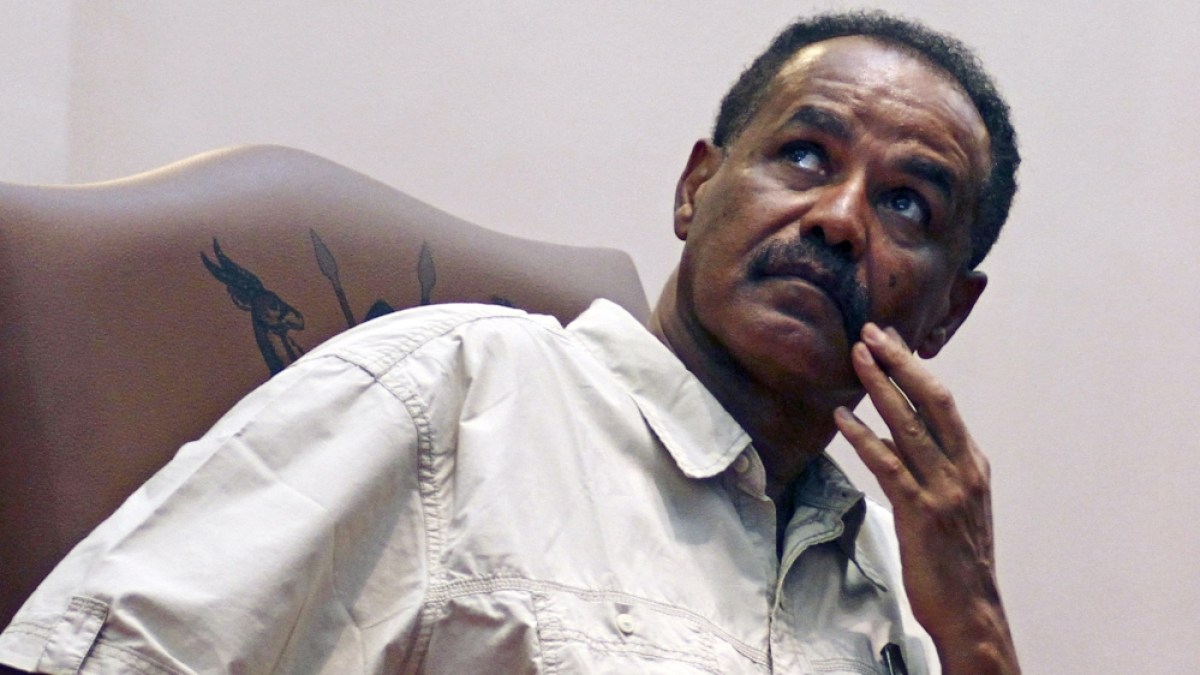
American writer and security analyst Paul B Henze, who served in the Carter administration as a deputy to National Security Adviser Zbigniew Brzezinski, once made a very astute observation about Eritrea’s current president, Isaias Afwerki.
In his 2007 book, Ethiopia in Mengistu’s Final Years: Until the Last Bullet, he noted “Isaias impressed me as remarkably similar in temperament and attitudes to Mengistu [Haile Mariam, Eritrea’s former dictator who has overseen the killings of tens of thousands of opposition figures and civilians]. He has many of the same mannerisms, a rather bulldoggish seriousness, a defensiveness behind a facade of feigned reasonableness that is not really convincing. One senses a stubborn, fundamentally authoritarian personality.”
The similarities Henze saw between Mengistu and Isaias have proven correct and highly consequential over the last three decades.
After declaring victory against the Mengsitu regime in 1991, Isaias was able to oversee the emergence of an independent, sovereign Eritrea. For a brief moment, Eritreans were full of hope. They assumed independence would bring more freedom and better economic prospects. There was talk of turning Eritrea into Africa’s Singapore.
However, the euphoria of independence was short-lived. The dream of transforming Eritrea into a prosperous liberal democracy did not appeal to Isaias. He wanted his country to resemble not Singapore, but Sparta. He rejected the democratic constitution drafted by the pre-eminent Eritrean jurist Bereket Habte Selassie and ruled Eritrea with an iron fist.
In no time, he turned Eritrea into a garrison state. He transformed Eritrean institutions and society at large into tools to fulfil his geo-political fantasies. Eritreans became unwilling pawns in the president’s many military schemes, with no space left for their personal dreams and aspirations.
Isaias ruthlessly dealt with even his closest colleagues and allies who dared to suggest that Eritreans enjoy some basic liberties that people elsewhere in the world often take for granted.
In May 2001, 15 senior Eritrean officials, many of whom had been on the president’s side throughout the independence war, issued an open letter urging him to reconsider his autocratic mode of governance and hold free and fair elections. At the time, three of the 15 officials were living abroad, and one eventually changed his position and rejoined the Isaias government. The remaining 11, however, were swiftly arrested on unspecified charges. More than 20 years later, the fates of these 11 men are still unknown. No one knows for sure if they are alive or dead. No legal or religious counsel or family member has been granted access to them. There have been no charges, no trials, no conviction and no sentence.
Though these senior officials are among the most prominent in Eritrea to be meted such treatment, their fate is hardly unique. Anyone in Eritrea who dares to question the great wisdom of the infallible President Isaias meets the same fate.
In the nightmarish gulag state that President Isaias created, no one is free to study, work, worship, run a business or engage in any other normal activities. There is a mandatory and indefinite military service which keeps every Eritrean citizen in servitude to the supreme leader for their entire lives.
While everyone in Eritrea suffers from Isaias’s institutionalised tyranny, religious and ethnic minorities suffer the most. Religious persecution in the country is so extreme that in 2004 the US Department of State designated Eritrea as a “country of particular concern” under the International Religious Freedom Act of 1998. There is also significant ethnic persecution in Isaias’s Eritrea. In a May 2023 report, for example, UN Special Rapporteur on the situation of human rights in Eritrea, Mohamed Abdelsalam Babiker, underlined the harsh conditions faced by the Afar community who inhabit the Dankalia area of the country. Babiker wrote: “The Afar are one of the most disenfranchised communities in Eritrea. For several decades, they have been subjected to discrimination, harassment, arbitrary arrests, disappearance, violence, and widespread persecution.”
In the end, Paul Henze’s insight about the fundamentally autocratic personality of Isaias proved not only right, but also an understatement. The oppression and violence of Isaias’s rule in the past three decades matched and at times surpassed that of Mengitsu.
Regrettably, the world rarely acknowledges the plight of Eritreans, who are forced to live their lives as unwilling servants and soldiers of their authoritarian president. The toll of Isais’s endless war schemes on Eritreans is still rarely mentioned in discussions about the region.
Eritrea under Isaias is a country always on a war footing. Right now, it is not only agitating against Ethiopia, but also actively involved in the civil war in Sudan. In fact, one would be hard-pressed to find a period in Eritrea’s post-independence history that it was not at war with one of its neighbours, or involved in some regional conflict or civil war. War is the modus vivendi of President Isaias.
The world is now paying some attention to Eritrea, because of the looming risk of conflict with Ethiopia. But even if conflict between the two neighbours is somehow prevented, the misery of Eritreans stuck in Isaias’s garrison state will continue. Forgotten and left to their own devices, Eritreans will continue to suffer in a brutal dictatorship where the individual is seen just as fodder for the mighty Eritrean Defence Forces. This must not be allowed to continue. The world must not avert its gaze and forget about the plight of Eritreans once their country is no longer mentioned in the news. The world needs to act before more Eritreans lose their lives and dreams fighting in Isaias’s forever wars.
The views expressed in this article are the author’s own and do not necessarily reflect Al Jazeera’s editorial stance.
Conflict Zones
Russia kills 8 civilians in overnight attack on Ukraine’s capital Kyiv | Russia-Ukraine war News
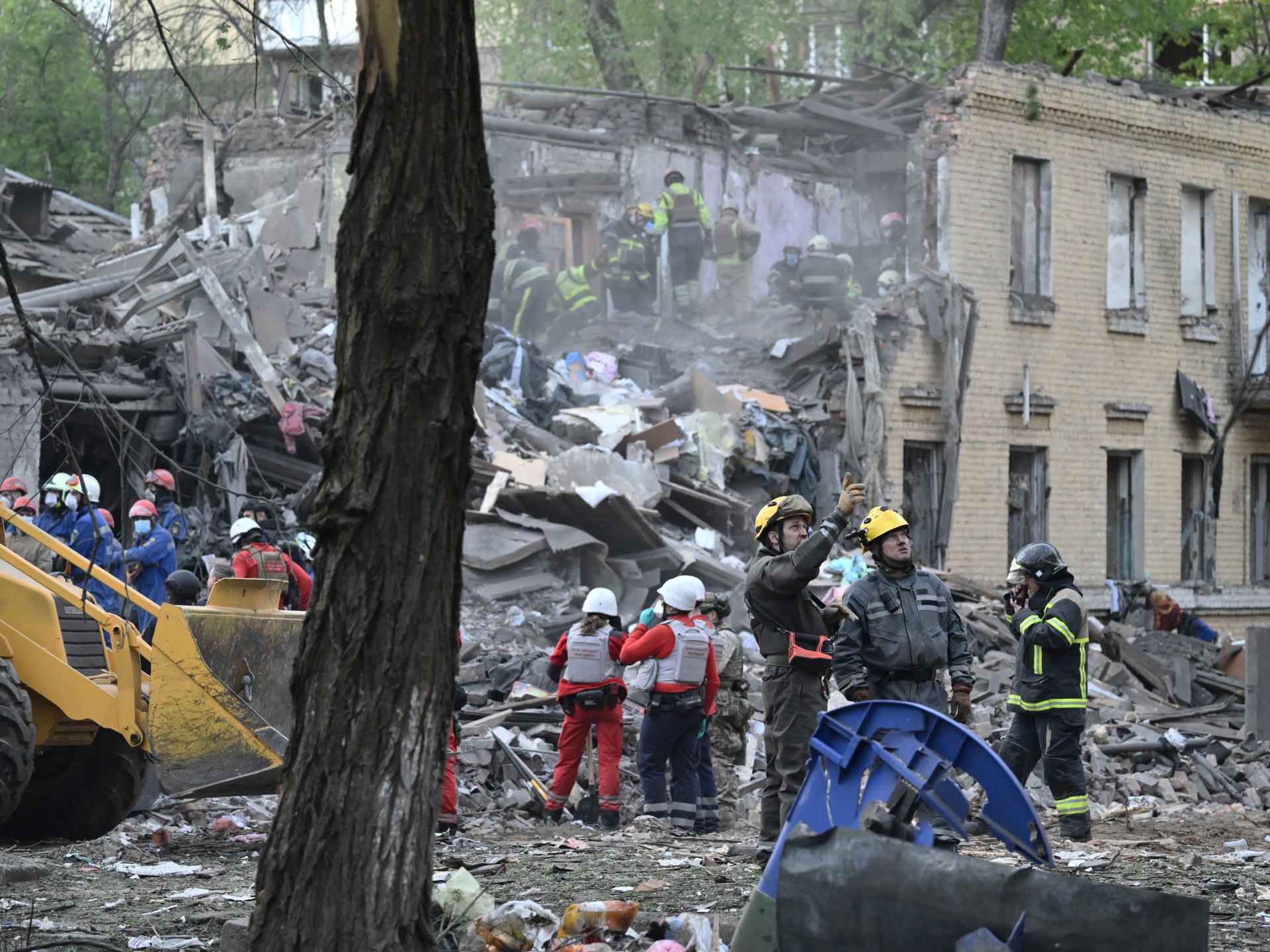
A Russian missile attack on Ukraine’s capital Kyiv has killed at least eight people and injured dozens in one of the deadliest strikes since Russia launched its full-scale invasion more than three years ago.
Loud blasts sounded over the city overnight on Thursday after air raid sirens rang out, warning residents to head to shelters before the Russian missile attack.
While Ukraine has been battered by Russian aerial attacks throughout the war, strikes on Kyiv, which has better air defences than other cities, are less common.
Through the night, rescue workers were going through the rubble of destroyed buildings and tackling blazes in apartment blocks.
“Russia has launched a massive combined strike on Kyiv,” Ukraine’s State Emergency Service said on Telegram, adding that eight people were killed and dozens more wounded.
At least 42 people were hospitalised, including six children, it added.
Russia also launched a large-scale attack on the northeastern city of Kharkiv overnight. Kharkiv Mayor Igor Terekhov said at least seven missiles had been fired at the city.
“One of the most recent strikes hit a densely populated residential area … Two people were injured there. The inspection of the sites of enemy strikes is under way,” Terekhov said, urging the city’s residents to “be careful”.
Separately, Russia’s Ministry of Defence reported downing 87 Ukrainian drones overnight, including 45 over Crimea, a Ukrainian peninsula that was annexed by Moscow in 2014.
Ceasefire efforts
The attacks throw yet more doubt on already fraught US efforts to get Russia and Ukraine to agree to a ceasefire, hours after President Donald Trump lashed out at Ukrainian President Volodymyr Zelenskyy for refusing to accept Moscow’s occupation of Crimea as a condition for peace.
Russian President Vladimir Putin has not yet responded to Zelenskyy’s offer to completely halt air attacks on civilian targets, and last month rejected a US-Ukrainian call for a full and unconditional ceasefire.
“Putin shows only a desire to kill,” Andriy Yermak, one of Zelenskyy’s top aides, said as Russia unleashed its attack overnight. “The attacks on civilians must stop,” he added.
Russia has launched a number of its most deadly aerial attacks at Ukraine over the last month – defying Trump’s push to bring about a rapid end to the bloodshed.
A ballistic missile attack on the centre of the northeastern city of Sumy killed at least 35 people on April 13, while an attack on Zelenskyy’s hometown of Kryvyi Rig in early April killed at least 19.
The Ukrainian leader had on Wednesday called for an “immediate, full and unconditional ceasefire”.
“Stopping the killings is the number one task,” Zelenskyy said on social media, as his top officials met European and US officials in London.
Hours before the attack on Thursday, Trump had said a peace deal was “very close” – and closed with Moscow – but accused Zelenskyy of being “harder” to negotiate with.
The Ukrainian president’s refusal to accept US terms for ending the conflict “will do nothing but prolong the ‘killing field’”, Trump said.
“I think we have a deal with Russia. We have to get a deal with Zelenskyy,” Trump told reporters. “I thought it might be easier to deal with Zelenskyy. So far it’s been harder.”
Reporting from Kyiv, Al Jazeera’s Zein Basravi said the Ukrainians he spoke to following Thursday’s attack “are incredibly frustrated”.
When asked about Trump’s seven-point peace plan, “many people here don’t even want to listen to the question. They say that Trump should keep quiet,” he said.
“People here are frustrated, they are angry, they are tired of what they describe as Russian lies and they are tired of what they describe as this bullish American government trying to force them into making concessions while they still experience ongoing air attacks on a daily basis,” Basravi reported.
Conflict Zones
DR Congo, M23 rebels announce ceasefire after peace talks in Qatar | Conflict News
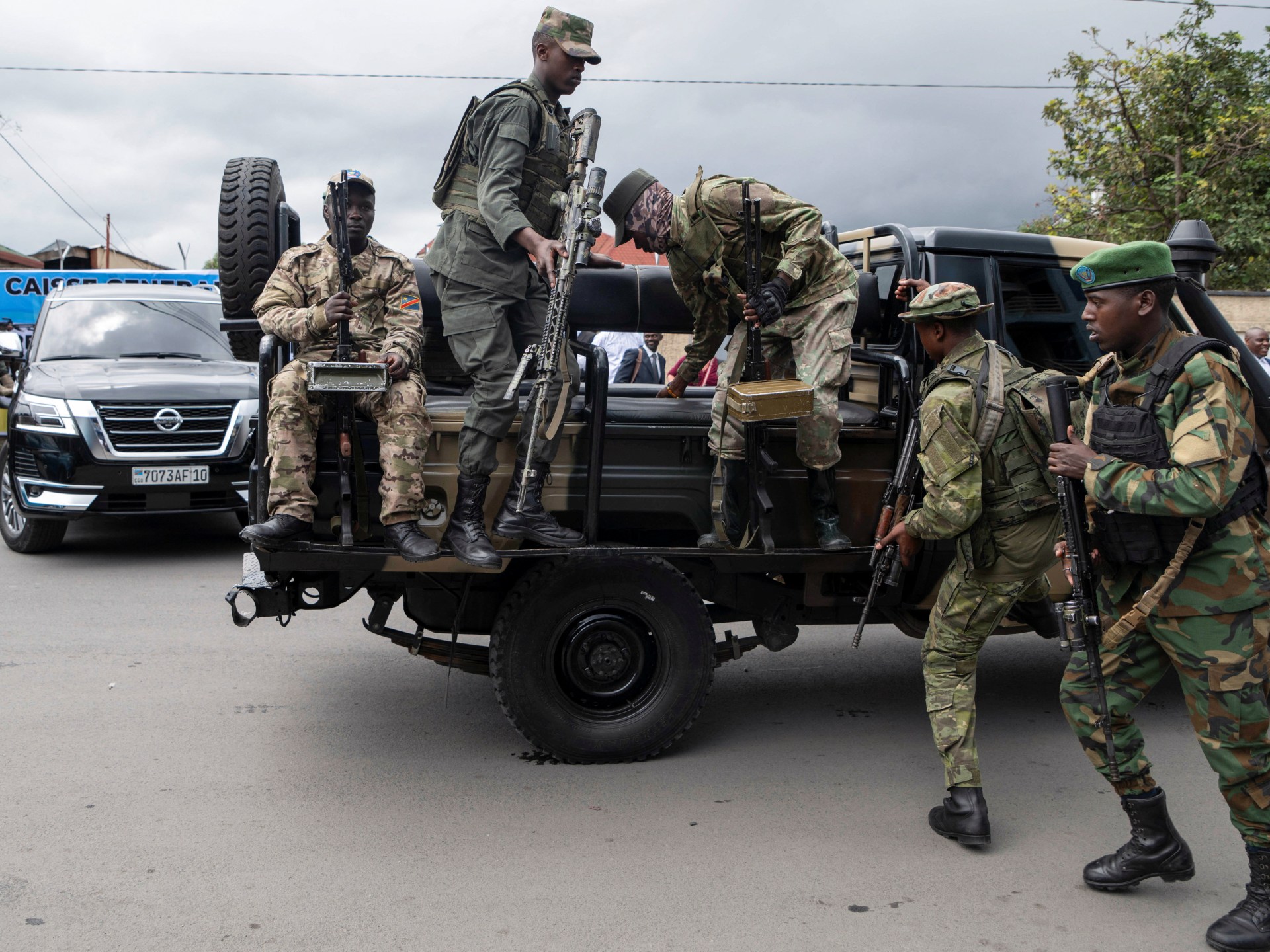
Tough negotiations are expected to resume in Qatar in the coming weeks for a broader peace deal.
The government of the Democratic Republic of the Congo (DRC) and Rwanda-backed M23 rebels have agreed to pause fighting as they work towards a broader peace deal, according to their joint statement.
The truce, declared late on Wednesday after a round of negotiations in Qatar’s capital Doha, has raised hopes that the latest wave of violence, spurred by M23’s bloody January assault and capture of the DRC’s two largest cities, may begin to subside.
“Both parties reaffirm their commitment to an immediate cessation of hostilities, a categorical rejection of any hate speech, intimidation, and call on local communities to uphold these commitments,” said the joint statement.
The “cessation of hostilities” would apply “throughout the duration of the talks and until their conclusion”, it added.
Al Jazeera’s Alain Uaykani, reporting from the eastern DRC city of Goma, said the two sides’ mutual agreement to pursue peace, after numerous failed negotiation attempts, was an encouraging shift.
However, he added that reports of continued clashes, including in South Kivu province, show how “fragile” any truce agreement is.
The peace push mediated by Qatar comes after the Gulf state successfully brokered a surprise meeting last month between Congolese President Felix Tshisekedi and Rwandan President Paul Kagame.
The session apparently paved the way for direct talks between DRC and M23, which Kinshasa had previously refused to meet with.
The decades-long conflict has roots in the 1994 Rwandan genocide, with M23 made up primarily of ethnic Tutsi fighters.
Many were former rebels integrated into the DRC army who later defected, citing discrimination and broken peace deals.
Since 2021, the two sides have agreed to at least six truces that later collapsed. The latest bout of violence since January has killed thousands and raised fears of a wider regional war.
The DRC, United Nations and Western governments have accused Rwanda of supporting M23 with troops and arms, but Kigali has long denied sending military help.
‘Crucial step’
Despite the truce statement, some DRC government and M23 sources cited by the Reuters news agency expressed frustration with the pace of negotiations.
The sources said disagreements over potential confidence-building measures, such as the release of DRC-held prisoners accused of links to Rwanda and M23, had almost derailed the outcome.
Ultimately, however, Qatar managed to pressure the two sides into releasing a joint statement agreeing to continue to work on a truce, according to informed diplomats cited by Reuters.
“This is a crucial step towards ending the violence,” Maxime Prevot, Belgium’s foreign affairs minister, said on Wednesday in a post on X.
Another informed source quoted by the AFP news agency said a “deeper round of discussions” was expected in Doha “in the coming weeks”.
Conflict Zones
White and Black farmers still bear the scars of Zimbabwe’s land grabs | Poverty and Development News

Harare, Zimbabwe – Guy Watson-Smith felt hurt and betrayed when his 5,000-hectare (12,355-acre) farm in Beatrice, in Zimbabwe’s Mashonaland East province, was violently invaded by three armed men in the early 2000s.
The then-51-year-old white commercial farmer was not just losing his land; he was leaving behind hundreds of workers and their families, many of whom he had known since childhood.
“We cried,” the 75-year-old told Al Jazeera.
On the morning of September 18, 2001, Watson-Smith, his two farm managers, and his unwelcome visitors sat at a table on the patio.
Watson-Smith’s wife, Vicky, offered them a cup of tea.
But the message was simple: leave or die.
His family was given two hours to pack.
They fled to the capital, Harare, 54km (33.5 miles) away, seeking refuge at his father-in-law’s home in the Avenues, an inner-city suburb.
Watson-Smith’s ordeal was not an isolated incident.
Across the country, war veterans armed with pistols led similar land grabs, together with their children and with assistance from the police’s elite units.
The invasions were part of the chaotic Fast Track Land Reform Program (FTLRP), launched under President Robert Mugabe in 2000 to reclaim land from about 4,000 white farmers and redistribute it to landless Black Zimbabweans.
But instead of redressing past injustices, Zimbabweans say it fuelled economic and land insecurity as mainly governing party loyalists benefitted from the reclamations.
More than two decades on, a struggling agricultural sector haunts Zimbabwe, leaving the question of land ownership unresolved, even as the government has begun to pay compensation to white farmers.

Colonial land invasions
When land was seized from white farmers in the early 2000s, it was forcibly and sometimes violently taken, with at least seven people killed in the process.
However, Zimbabwe’s land struggles did not begin with Mugabe’s FTLRP or even the country’s independence in 1980. The tensions stretch back over a century to the arrival of white British settlers in 1890.
When the British arrived, they invaded Mashonaland areas and took mining rights from the locals under agreements that the local leadership did not understand.
They then expanded control, violently displacing Black people from their fertile ancestral lands.
Forced into barren areas with poor soil, low rainfall and tsetse flies, Black Zimbabweans struggled to farm or raise cattle.
By the 1950s, land was formally divided along racial lines, with white settlers holding the most fertile areas.
This deep injustice fuelled the liberation struggle.
Revolutionary groups like ZANU and ZAPU took up arms, and from 1964 to 1979, land was at the heart of the Rhodesian Bush War – also known as the Second Chimurenga, during which Black Zimbabweans fought for independence from the white minority government.
The 1969 Land Tenure Act, which escalated Black land evictions, was a breaking point.
For many fighters, reclaiming the land became not just about survival, but about identity and economic freedom.
The war ended with the Lancaster House Agreement drawn up and signed in London in December 1979, setting the stage for Zimbabwe’s first democratic elections.
On April 18, 1980, after Mugabe’s victory, Zimbabwe gained independence from Britain. The Lancaster agreement barred Mugabe’s government from forcibly seizing land, allowing only voluntary transfers under a “willing buyer, willing seller” system from 1980 to 1990.
Many war veterans felt betrayed.
They had fought for liberation, expecting immediate land redistribution, but years of slow negotiations left them frustrated. From 1990 to 2000, land reclamations took place by the government compulsorily buying land from white commercial farmers using funds from donors, including Britain.
However, the process became politicised as some senior politicians and elites redistributed land among themselves instead of to the poor. Some of the funds were allegedly loaned to ruling ZANU-PF party loyalists and not used for the intended purposes of land redistribution. This raised accusations of corruption, causing some donors to cut funding.
Britain, which had initially committed 20 million pounds ($26.6m at the current rate) to fund the land reform programme, withdrew support in 1997.
The United Kingdom said it could no longer accept responsibility for colonial injustices and would not fund a programme plagued by corruption and elite capture.
Donor funding helped the Zimbabwean government buy land from white commercial farmers, enabling about 50,000 Black farmers to receive land. But the programme was ultimately underfunded and fell far short of the targeted 8 million hectares (19.8 million acres).

Mugabe-era land grabs
In February 2000, under mounting pressure from furious war veterans, Mugabe attempted to amend the constitution to allow land seizures without compensation.
When the referendum failed, the war veterans and their families took matters into their own hands by invading farms. Soon, Mugabe officially followed suit by launching the FTLRP.
At that time, the minority white population, which made up about 4 percent of the country, owned more than half the land in Zimbabwe.
For months, Watson-Smith’s land, where he grew tobacco, maize, paprika, groundnuts and Rhodes seed for export, remained untouched until the day a powerful war hero with the ZANU-PF set his sights on it.
Watson-Smith was in Harare, where he worked as the Mashonaland East provincial chairman of the Commercial Farmers Union, a body representing white commercial farmers, when he learned that his farm had been invaded by retired General Solomon Mujuru, a former commander of the Zimbabwe Defence Forces and top ZANU-PF figure in the province.
Efforts to move their assets like tractors and vehicles went in vain, Watson-Smith said, as the invaders allowed only his wife to take their personal belongings, like photographs and furniture, from the house before leaving.
Even the courts offered little protection.
Though Watson-Smith won a High Court ruling to reclaim his assets, Mujuru’s thugs chased away the sheriff sent to enforce the order.
Watson-Smith and his family were lucky to escape their farm unharmed. But they were still afraid. On December 21, 2001, they fled through the Beitbridge border post to South Africa, later moving to France to start a new life.

Even Black farmers not safe
Before the farm invasions, Zimbabwe produced enough to feed itself and for exports to Southern Africa and Europe. Agriculture was the backbone of the economy, employing much of the country’s workforce. Some Black Zimbabweans had also risen to the top, managing farms.
Initially, Mugabe’s land expropriation programme was meant to redistribute land to disadvantaged Black Zimbabweans to boost equity and agricultural development.
But under the cover of correcting colonial injustices, powerful officials seized productive farms from both white and Black farmers.
Kondozi Estates in eastern Zimbabwe was one of the farms seized by senior ZANU-PF figures in 2004.
The land in Manicaland province was co-owned by Black Zimbabwean Edwin Moyo and the white de Klerk family.
At the time, it was a vital exporter of fresh produce, particularly high-quality beans, gooseberries, corn, mangetout and sugar snaps to European retailers like Tesco and Sainsbury’s.
It employed hundreds in Mutare, and its destruction was a death blow to the local economy.
The same pattern repeated itself on other farms, locals say, with Black owners without strong ties to the ZANU-PF continuing to face evictions.
In 2021, human rights defender and lawyer Siphosami Malunga lost his farm to ZANU-PF secretary-general Obert Mpofu.
Though Zimbabwe’s lower courts later ruled in his favour and he is back on his farm awaiting a High Court decision, the battle over its ownership rages on.
“Land reform was necessary,” 53-year-old Malunga told Al Jazeera.
“The colonial project dispossessed Blacks, pushing them on to barren land while whites took the best farms. But the way reform was handled enriched the elite while leaving ordinary Zimbabweans with nothing.”
Mugabe once campaigned for a “one man, one farm” policy. Yet his allies ignored it. Even his wife, Grace Mugabe, amassed at least 15 farms.
Most of the beneficiaries of the FTLRP were ZANU-PF loyalists, experts note.
Rejoice Ngwenya, a political analyst based in Harare, said Mugabe’s land reform was not about Black empowerment.
“It had motives: firstly, to pacify war veterans that were agitating for more recognition; secondly, to punish white commercial farmers who were supporting the opposition. The man was insecure,” he told Al Jazeera.
“If you promise to not expropriate Black-owned farms, you should not touch Moyo or Malunga’s farms. But ZANU-PF does not care,” he remarked.
Vivid Gwede, another Harare-based political analyst, said land ownership has been used as a tool to punish disloyalty or reward loyalty to the governing party.
“On account of politics, some Black farmers have had their land invaded,” he said.

Compensation and rejection
Unlike white commercial farmers who spent decades learning the land, most of the ZANU-PF-aligned farmers who took over had no farming experience.
The new owners were people who had spent most of their lives in the bush fighting against white colonialists, experts note, while many Black farm workers who had experience managing white-owned farms did not benefit from land reclamations.
As a result of the chaotic and violent invasions, knowledge of agricultural practices was also not passed on.
Soon, the Southern African nation with a once-thriving agricultural economy began to face a food crisis, later compounded by climate change.
For years, many Zimbabweans have depended on food aid from donors like the United Nations World Food Programme. In April 2024, the government declared a national disaster as a severe El Nino-induced drought left more than half of Zimbabwe’s 15.1 million people facing hunger.
The crisis exposed the country’s collapsed agricultural sector. Before land seizures, white commercial farmers and Black farmers like Moyo had irrigation schemes to mitigate droughts. ZANU-PF dismantled these systems, leaving the country vulnerable.
Zimbabwe’s collapse in agricultural productivity stems not just from poor planning, but from a deeper culture of impunity, experts say.
Across the country, though court orders were issued to stop farm invasions and evictions of white commercial farmers, these were ignored. Since 2000, former farmers have filed hundreds of legal cases, trying to reclaim their assets, with little success.
The 2013 constitution promised compensation, but only for farm improvements, not the land itself.
When Emmerson Mnangagwa took power in a 2017 military coup, he inherited a shattered economy, abandoned and poorly managed farms, food shortages, and soaring unemployment.
Desperate for solutions, he reached a $3.5bn compensation deal with white farmers in 2020, hoping to mend relations with the West and lift US economic sanctions imposed in 2001. But the plan stalled.
In October 2024, the government set aside $20m to compensate a handful of foreign white farmers from Denmark, Switzerland, the Netherlands and Germany whose investments were affected by the land reform programme.
This month, Finance Minister Mthuli Ncube announced that the government had paid $3.1m to white former farmers who lost land during Zimbabwe’s land reform.
However, the Compensation Steering Committee (CSC), a domestic body representing white farmers, criticised the compensation as a token gesture and rejected the deal, saying it wants negotiations instead.
“We’re willing to talk, but they [the government] are not talking to us,” Ian McKersie, chairman of the CSC told Al Jazeera.
In response, Nick Mangwana, permanent secretary in Zimbabwe’s Ministry of Information, told Al Jazeera there are “factions” among the white farmers. “If they speak, they are speaking for themselves, they do not represent the mainstream,” he said. “It is preposterous [to reject the deal]. It does not make sense.”
Mangwana also denied that there are ongoing land seizures, such as the case of Malunga, whose farm was taken in 2021. “These are just disputes … It is not a land invasion. There is no land invasion in Zimbabwe,” he said.

Untended farms and uncertain futures
Now in France, Watson-Smith runs a real estate business.
But back in Zimbabwe, his once-productive Alamein Farm has fallen into disuse; its land is now less vibrant than it used to be.
After General Mujuru, who was one of Zimbabwe’s most feared men, seized Watson-Smith’s farm, he turned it into a hunting ground. Following Mujuru’s death in 2011, his wife, former Vice President Joice Mujuru, kept the land but struggled to maintain it.
Meanwhile, Kondozi Estates, the major part-Black owned farm taken by ZANU-PF elites, also fell into decay. A visit this year revealed abandoned equipment and overgrown fields.
Across the country, seized farms remain untended.
During the land reform, farms were given long-term leases. But banks refused to recognise these leases as collateral, making it impossible for farmers to secure loans.
In late 2024, President Mnangagwa ordered the Ministry of Lands to stop issuing permits and leases in favour of title deeds. But experts warn this is problematic as it does not address the land dispute between resettled farmers and dispossessed white commercial farmers.
“If the government issues title deeds on land already under existing historic title deeds, it’s unlawful,” Willie Spies, a lawyer assisting dispossessed Zimbabweans, told Al Jazeera
“A legitimate process requires compensating former farmers fairly before transferring ownership.”
New farmers have already benefitted from state subsidies, including a 2007 mechanisation programme that distributed tractors and harvesters without repayment.
Zimbabwe’s debt now stands at $21bn, according to the World Bank – $13bn owed to international creditors and $8bn in domestic debt. Some of the domestic debt is a result of the agricultural subsidies, which ended up benefitting political elites and not the poor rural farmers.
Corruption runs deep, said Malunga, who is still awaiting a final court decision about ownership of his farm.
“Agricultural subsidy programmes were hijacked by the elite, enabling grand corruption and theft of billions,” he said.
While title deeds could offer land security to the new farm owners, he warned: “This risks creating a privileged Black landowning class.”
Watson-Smith notes that although title deeds helped farmers like him by “open[ing] the doors to credit for irrigation, dams and every farm improvement”, giving title deeds to new farm owners without addressing past injustices is meaningless.
“It might impress Zimbabwean banks, but international lenders won’t recognise stolen property,” he said.
Once the backbone of Zimbabwe’s economy, agriculture is now crippled by corruption, mismanagement and political greed, farmers say.
Meanwhile, the scars of the land grabs remain, both for displaced former farmers and a nation still grappling with the fallout.
As many white farmers live in self-exile abroad, many common Black farmers are in limbo, facing off against senior politicians in the battle for land ownership.
For now, Malunga is back on his farm, growing tomatoes and other crops. But he remains unsettled.
“Pending the decision of the High Court, we are in occupation,” he said, knowing his future is uncertain until the judge decides.
-

 Lifestyle23 hours ago
Lifestyle23 hours agoNFL draft suits give prospects another way to cash in on their fame, flash their style on red carpet
-

 Sports1 day ago
Sports1 day agoLA Lakers level first-round series against Minnesota Timberwolves behind big Luka Dončić performance
-

 Education16 hours ago
Education16 hours agoHarvard’s president says the school will ‘not compromise’ on its rights with the Trump admin
-
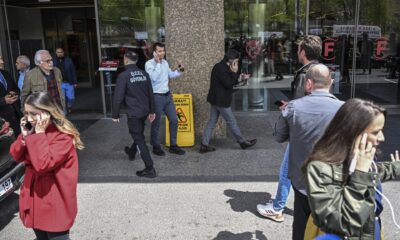
 Middle East1 day ago
Middle East1 day agoMagnitude 6.2 earthquake jolts Turkiye’s Istanbul | News
-

 Lifestyle1 day ago
Lifestyle1 day agoWorries about flying seem to be taking off. Here’s how to cope with in-flight anxiety
-
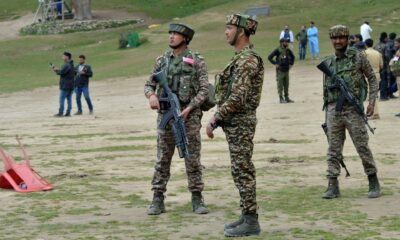
 Conflict Zones24 hours ago
Conflict Zones24 hours agoManhunt under way in Kashmir after deadly attack on tourists | Conflict News
-

 Europe2 days ago
Europe2 days agoHow Pope Francis’ early life in Argentina explains his time in the Vatican
-
Europe21 hours ago
New Prince Louis photo released to mark 7th birthday




